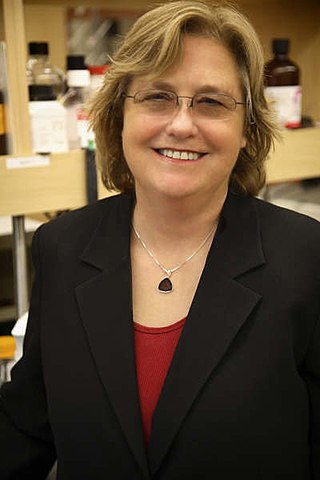Niche may refer to:
Niche may refer to:

In ecology, a niche is the match of a species to a specific environmental condition. It describes how an organism or population responds to the distribution of resources and competitors and how it in turn alters those same factors. "The type and number of variables comprising the dimensions of an environmental niche vary from one species to another [and] the relative importance of particular environmental variables for a species may vary according to the geographic and biotic contexts".
Gameplay is the specific way in which players interact with a game, and in particular with video games. Gameplay is the pattern defined through the game rules, connection between player and the game, challenges and overcoming them, and player's connection with it. Video game gameplay is distinct from graphics and audio elements. In card games, the equivalent term is play.
Video game design is the process of designing the rules and content of video games in the pre-production stage and designing the gameplay, environment, storyline and characters in the production stage. Some common video game design subdisciplines are world design, level design, system design, content design, and user interface design. Within the video game industry, video game design is usually just referred to as "game design", which is a more general term elsewhere.

A virtual world is a computer-simulated environment which may be populated by many simultaneous users who can create a personal avatar and independently explore the virtual world, participate in its activities, and communicate with others. These avatars can be textual, graphical representations, or live video avatars with auditory and touch sensations. Virtual worlds are closely related to mirror worlds.

In statistics and business, a long tail of some distributions of numbers is the portion of the distribution having many occurrences far from the "head" or central part of the distribution. The distribution could involve popularities, random numbers of occurrences of events with various probabilities, etc. The term is often used loosely, with no definition or an arbitrary definition, but precise definitions are possible.
Realized niche width is a phrase relating to ecology, is defined by the actual space that an organism inhabits and the resources it can access as a result of limiting pressures from other species. An organism's ecological niche is determined by the biotic and abiotic factors that make up that specific ecosystem that allow that specific organism to survive there. The width of an organism's niche is set by the range of conditions a species is able to survive in that specific environment.
Digital distribution, also referred to as content delivery, online distribution, or electronic software distribution, among others, is the delivery or distribution of digital media content such as audio, video, e-books, video games, and other software.

Character displacement is the phenomenon where differences among similar species whose distributions overlap geographically are accentuated in regions where the species co-occur, but are minimized or lost where the species' distributions do not overlap. This pattern results from evolutionary change driven by biological competition among species for a limited resource. The rationale for character displacement stems from the competitive exclusion principle, also called Gause's Law, which contends that to coexist in a stable environment two competing species must differ in their respective ecological niche; without differentiation, one species will eliminate or exclude the other through competition.

Competition is an interaction between organisms or species in which both require a resource that is in limited supply. Competition lowers the fitness of both organisms involved since the presence of one of the organisms always reduces the amount of the resource available to the other.
A stock market simulator is computer software that reproduces behavior and features of a stock market, so that a user may practice trading stocks without financial risk. Paper trading, sometimes also called "virtual stock trading", is a simulated trading process in which would-be investors can practice investing without committing money.

Elaine V. Fuchs is an American cell biologist known for her work on the biology and molecular mechanisms of mammalian skin and skin diseases, who helped lead the modernization of dermatology. Fuchs pioneered reverse genetics approaches, which assess protein function first and then assess its role in development and disease. In particular, Fuchs researches skin stem cells and their production of hair and skin. She is an investigator at the Howard Hughes Medical Institute and the Rebecca C. Lancefield Professor of Mammalian Cell Biology and Development at The Rockefeller University.

Ubisoft Divertissements Inc., doing business as Ubisoft Montreal, is a Canadian video game developer and a studio of Ubisoft based in Montreal.
A target market, also known as serviceable obtainable market (SOM), is a group of customers within a business's serviceable available market at which a business aims its marketing efforts and resources. A target market is a subset of the total market for a product or service.

Creative Technology Ltd., or Creative Labs Pte Ltd., is a Singaporean multinational technology company. The principal activities of the company and its subsidiaries consist of the design, manufacture and distribution of digitized sound and video boards, computers and related multimedia and personal digital entertainment products. It also partners with mainboard manufacturers and laptop brands to embed its Sound Blaster technology on their products.

Nicrophorus vespilloides is a burying beetle described by Johann Friedrich Wilhelm Herbst in 1783. The beetles vary widely in size and can present with a range of anywhere from 12 mm to 20 mm in size. They have two conspicuous orange-yellow bands on the elytra. The color of the antennae are an important distinguishing feature, being totally black. The color of their orange and black markings is multifunctional, as they are conspicuous to avian predators. In general, they present a unique ecological niche, which is their evolution of aposematism, or the strategy they use to warn predators through their conspicuous signals. The wing cases of these beetles possess a squarish shape and are notably shorter in length than their abdomens, indicating a distinct physical characteristic of the species.
Sally Temple is an American developmental neuroscientist in Albany, New York. She is a co-founder and scientific director for The Neural Stem Cell Institute and is a professor of Neuroscience and Neuropharmacology at Albany Medical College Temple is also the principal investigator in her laboratory that focuses on neural stem cells and therapies for neurological-related disorders

Sports marketing as a concept has established itself as a branch of marketing over the past few decades; however, a generally accepted definition does not exist. Academicians Kaser and Oelkers define sports marketing as 'using sports to market products'. It is a specific application of marketing principles and processes to sport products and to the marketing of non- sports products through association with sport.

Coexistence theory is a framework to understand how competitor traits can maintain species diversity and stave-off competitive exclusion even among similar species living in ecologically similar environments. Coexistence theory explains the stable coexistence of species as an interaction between two opposing forces: fitness differences between species, which should drive the best-adapted species to exclude others within a particular ecological niche, and stabilizing mechanisms, which maintains diversity via niche differentiation. For many species to be stabilized in a community, population growth must be negative density-dependent, i.e. all participating species have a tendency to increase in density as their populations decline. In such communities, any species that becomes rare will experience positive growth, pushing its population to recover and making local extinction unlikely. As the population of one species declines, individuals of that species tend to compete predominantly with individuals of other species. Thus, the tendency of a population to recover as it declines in density reflects reduced intraspecific competition (within-species) relative to interspecific competition (between-species), the signature of niche differentiation.

Jeanne Frances Loring is an American stem cell biologist, developmental neurobiologist, and geneticist. She is the founding Director of the Center for Regenerative Medicine and emeritus professor at the Scripps Research Institute in La Jolla, California. She has founded two biotechnology companies, Arcos BioScience (1999) and Aspen Neuroscience (2018)
Strategic planning and uncertainty intertwine in a realistic framework where companies and organizations are bounded to develop and compete in a world dominated by complexity, ambiguity, and uncertainty in which unpredictable, unstoppable and, sometimes, meaningless circumstances may have a direct impact on the expected outcomes. In this scenario, formal planning systems are criticized by a number of academics, who argue that conventional methods, based on classic analytical tools, fail to shape a strategy that can adjust to the changing market and enhance the competitiveness of each business unit, which is the basic principle of a competitive business strategy. Strategy planning systems are supposed to produce the best approaches to concretize long-term objectives. However, since strategy deals with the upcoming future, the strategic context of an organization will always be uncertain, therefore the first choice an organisation has to make is when to act; acting now or when the uncertainty has been resolved.